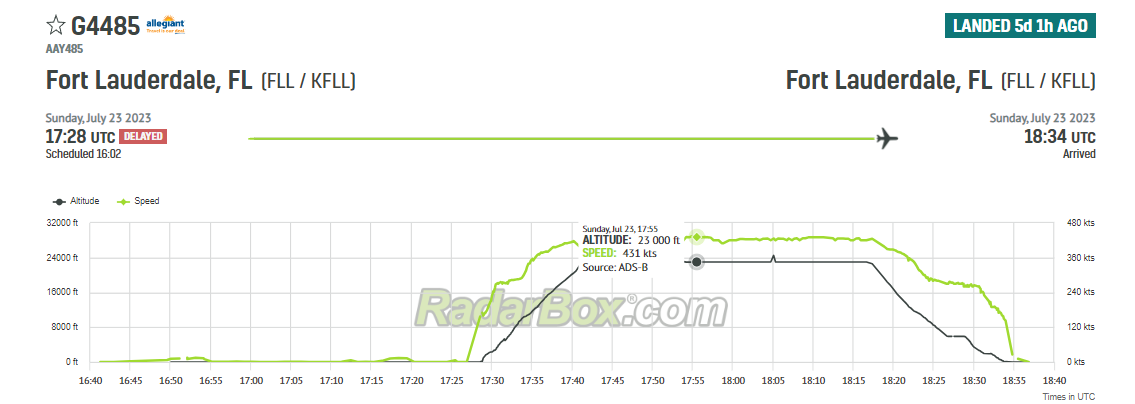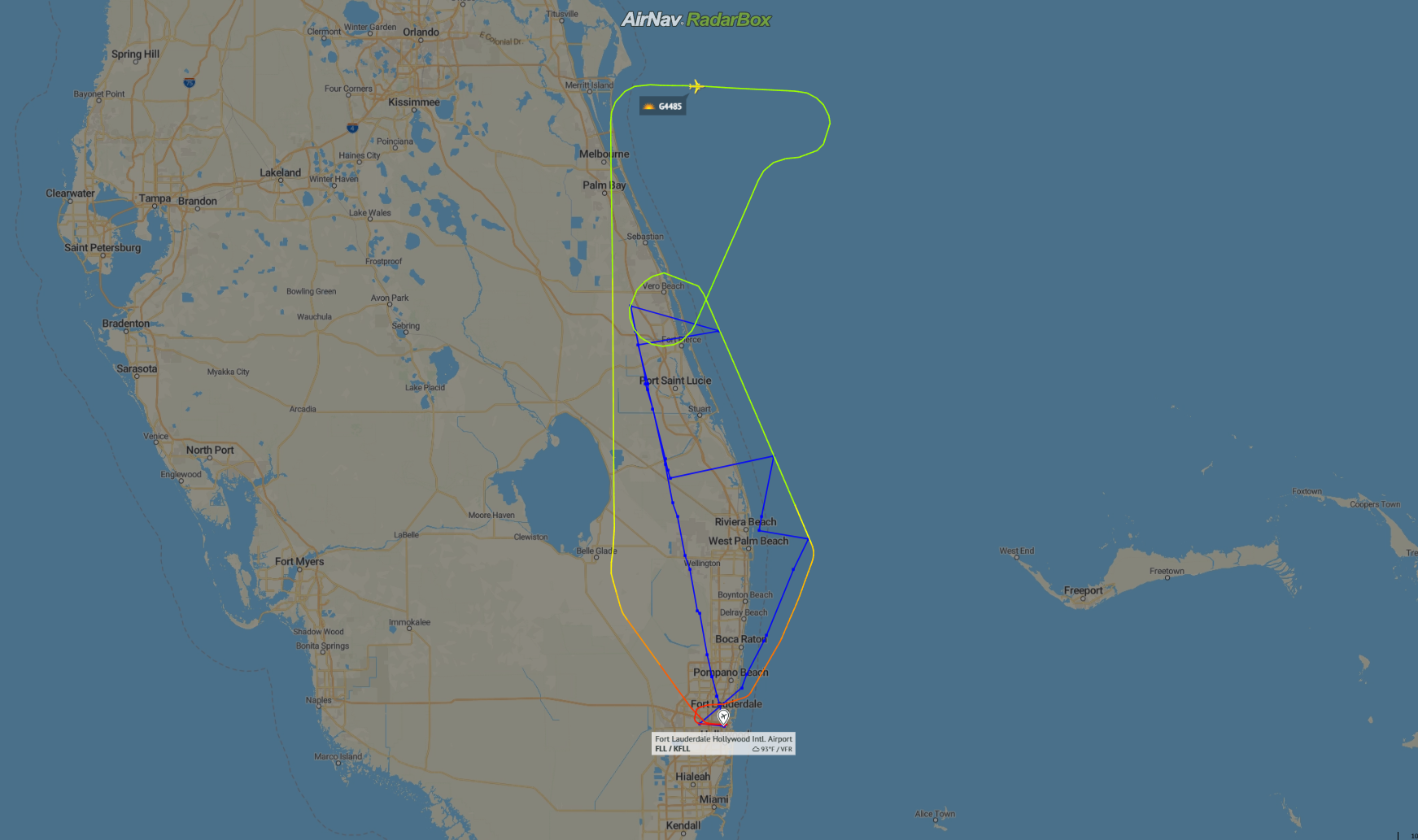FAA is investigating a near mid-air collision involving an Allegiant Air flight and a Gulfstream jet

Allegiant Air Airbus A320-200 (N235NV) - Ivan P. Nesbit "THUD" - AirTeamImages.com
In a harrowing incident, an Allegiant Air flight G4485 was compelled to execute a sudden 600 feet climb to avoid a potential collision with an oncoming private jet.

Allegiant flight G4485 from Fort Lauderdale Hollywood Airport to Lexington (Track Log)
The heart-stopping situation unfolded at an altitude of 23,000 feet when the FAA directed the Allegiant flight to take evasive action to steer clear of a Gulfstream jet that was on a collision course.

Allegiant flight G4485 from Fort Lauderdale Hollywood Airport to Lexington
Approximately twenty minutes into the flight, panic gripped the passengers as they initially perceived the unsettling experience as mere turbulence. However, the reality proved to be far more alarming. The Airbus A320 had to swiftly undertake "evasive actions" to avert a disastrous collision with the private Gulfstream Aerospace G-IV-SP (N86MS).

Jerrica Thacker, a 21-year-old passenger, was on the Allegiant flight heading to Lexington, Kentucky, accompanied by her twin sister, her sister's boyfriend, and her aunt. According to Thacker, chaos erupted onboard as two flight attendants, busy taking passengers' orders and serving drinks, suddenly lost their balance and fell to the ground. The cause of this unsettling incident was the aircraft's abrupt and mysterious movement to avoid a potential collision with another aircraft.
During this abrupt maneuver, chaos ensued onboard, resulting in two flight attendants attending to passengers' orders and beverage service losing their balance and falling to the ground, as reported by Thacker.
The incident occurred on Sunday, July 23, during Allegiant Air's flight 485, operated by an Airbus A320-214 (N229NV). The situation called for urgent evasive action as the pilot received a TCAS (Traffic Collision Avoidance System) alert, signaling the presence of another aircraft at the same altitude. At the time, the aircraft was swiftly flying at an altitude of 23,000 feet and was under the guidance of an air traffic controller from the Miami Air Route Traffic Control Center. To their surprise, the aircraft unexpectedly crossed paths with a northbound Gulfstream business jet, necessitating immediate response to avert a potential collision.
Reacting to the alarming TCAS alert, the pilot quickly turned to the east to avoid a potential nose-on-nose collision with the private jet. The sudden jolt caused by the maneuver prompted the pilot to address the passengers over the intercom, explaining the gravity of the situation and the necessity to return to Fort Lauderdale, Florida. Regrettably, one of the flight attendants suffered an injury during the evasive action, necessitating the return.
It is noteworthy that the pilot of the Gulfstream jet also responded to the situation with prompt evasive measures after receiving an alert from air traffic control.
The Traffic Collision Avoidance System, commonly called TCAS, plays a vital role in aviation safety. It is an independent aircraft collision avoidance system that continuously monitors the airspace surrounding an aircraft. When equipped with an active transponder, it can detect other transponder-equipped aircraft, regardless of air traffic control involvement. The system provides timely warnings to pilots about potentially hazardous aircraft in the vicinity, significantly reducing the risk of mid-air collisions (MACs).
This incident underscores the importance of TCAS and its role in preventing dangerous situations and maintaining air travel safety. Authorities will likely conduct a thorough investigation to determine the circumstances leading to the near-miss event and identify any lessons or improvements that can enhance aviation safety. The FAA is investigating the incident.
READ NEXT...
 82244
82244Tracking Helicopters With RadarBox
Today we'll explore how to filter and track helicopters on RadarBox.com. Read this blog post to learn more...- 30518
AirNav Announces Coronavirus Related Data & Graphics Available
AirNav Systems is providing data COVID-19 air traffic related data for analysis, study and use.  22570
22570Replay Past Flights with Playback
AirNav RadarBox officially launches the playback function on RadarBox.com, allowing users to replay the air traffic for a specific date and time in the past, within a 365-day period. Read our blog post to learn more about this feature.
